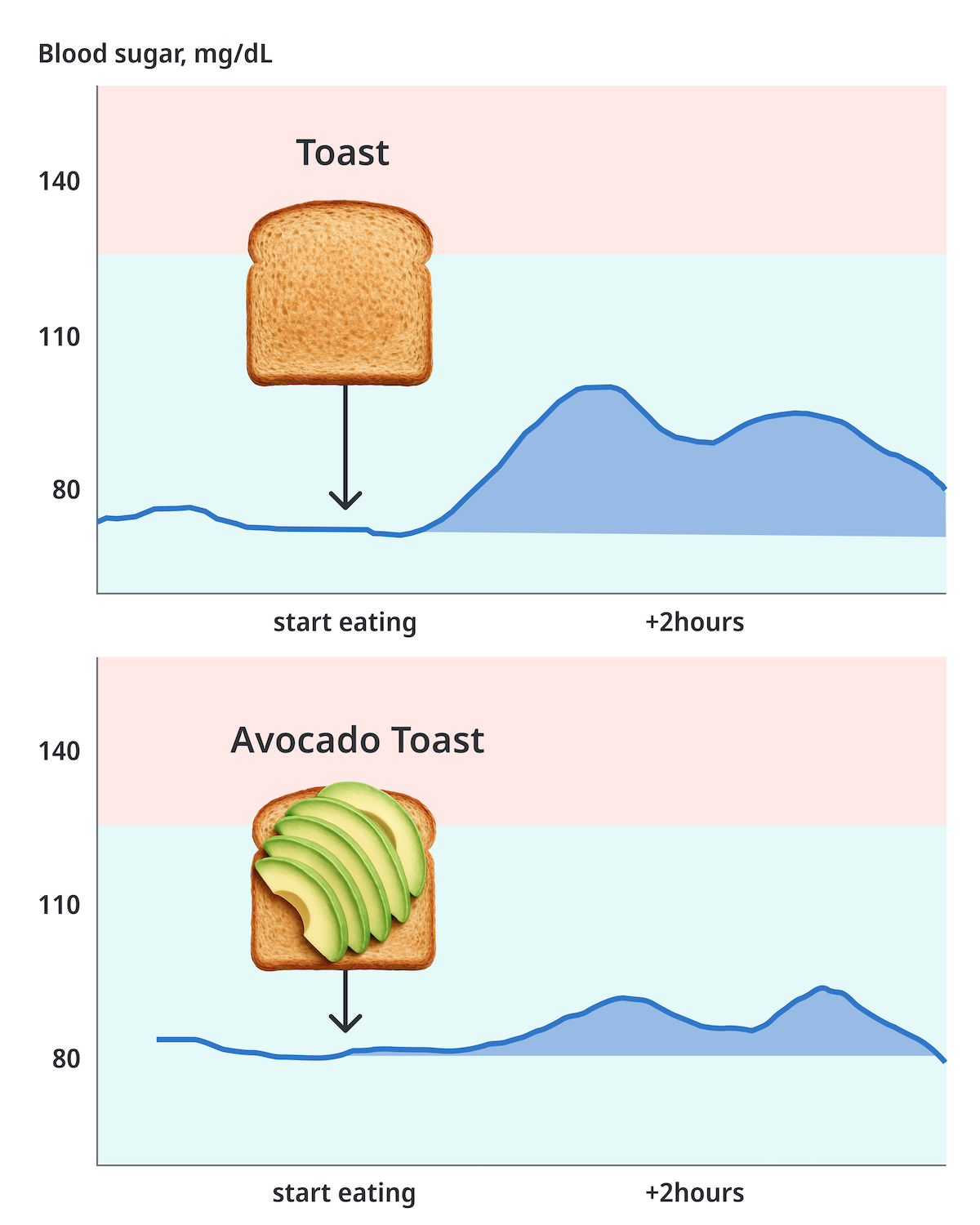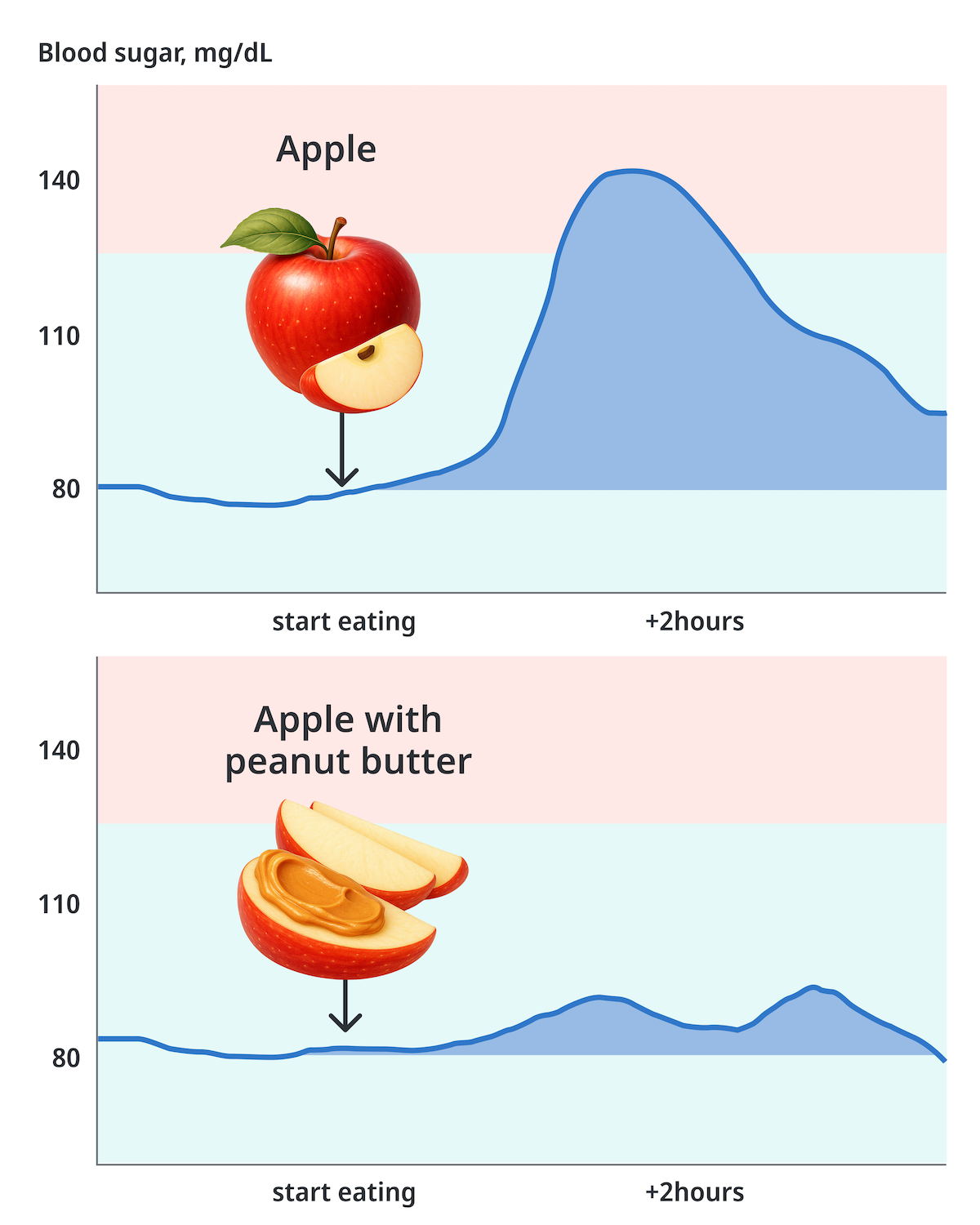Understanding Macronutrients: The Big Three
When it comes to healthy eating, there are three main nutrients you need to know about: carbohydrates, proteins, and fats. These are called macronutrients because your body needs them in large amounts. Each one has a unique job in your body, and together, they give you the energy (calories) you need to live and thrive.
- Carbohydrates (Carbs): These are your body’s main source of quick energy. Examples include bread, rice, pasta, fruits, vegetables, and beans.
- Proteins: These are important for building and repairing muscles, skin, and other tissues. Examples include chicken, fish, eggs, Greek yogurt, tofu, lentils, and nuts.
- Fats: These help your body absorb vitamins, protect your organs, and provide long-lasting energy. Examples include avocados, olive oil, nuts, seeds, and fatty fish like salmon.
How Our Body Processes Macronutrients
Your body digests each macronutrient differently, especially when it comes to blood sugar. Blood sugar (or glucose) is the sugar in your blood that gives your cells energy.
- Carbohydrates are broken down into sugar quickly, which can raise blood sugar levels fast. (Note: A lot of people think they need to cut out carbs to lose weight, but that’s not true. The problem isn’t carbs—it’s eating too many carbs without enough protein or fat to balance them.)
- Proteins break down more slowly and don’t cause big spikes in blood sugar.
- Fats slow down how quickly sugar from carbs enters your bloodstream, helping keep blood sugar steady.
Examples of Balanced Meals
Let’s look at two examples to show how combining macronutrients can improve blood sugar control:
Example 1: Toast for Breakfast
Eating plain toast (mostly carbs) can make your blood sugar spike. Add some avocado (healthy fat) or a fried egg (protein) on top, and your blood sugar will rise more slowly because fats and proteins balance the carbs.

Example 2: Snack Time
Instead of just eating an apple (carbs), pair it with a handful of peanut butter (fat and protein). This will help keep you full longer and prevent a sugar crash.

The Role of Fiber
Fiber is a special type of carbohydrate that your body can’t fully digest. Think of fiber as a turnstile at an amusement park—it controls the flow, letting sugar molecules into your bloodstream one at a time.
The turnstile (fiber) looks at all the people (sugar molecules) waiting in line and says, “Hey, I see all of you! Don’t worry—you’ll all get into the park (the bloodstream)—but only one at a time.” This slower process helps keep your blood sugar levels steady and balanced.
Foods high in fiber include:
- Fruits like apples, berries, and pears
- Vegetables like broccoli, spinach, and carrots
- Whole grains like oatmeal, brown rice, and quinoa
- Nuts, seeds, and beans
Fun fact: An avocado has 10–15 grams of fiber, which is almost half of your daily fiber needs! Adding avocado to your meals can help balance blood sugar and keep you feeling full longer.

Tips for Balancing Your Meals
- Add protein: Include chicken, fish, tofu, eggs, or Greek yogurt in your meals.
- Include healthy fats: Avocado, nuts, seeds, and olive oil are great options.
- Don’t skip fiber: Choose whole grains, fruits, vegetables, and beans.
- Pair your foods: Combine carbs with proteins and fats to avoid blood sugar spikes.
Takeaways
Carbohydrates, proteins, and fats are all essential for your health. By balancing these macronutrients and including fiber in your meals, you can keep your blood sugar steady, support a healthy metabolism, and feel more energized throughout the day. Nutrition isn’t about cutting out foods—it’s about finding the right balance for your body!



